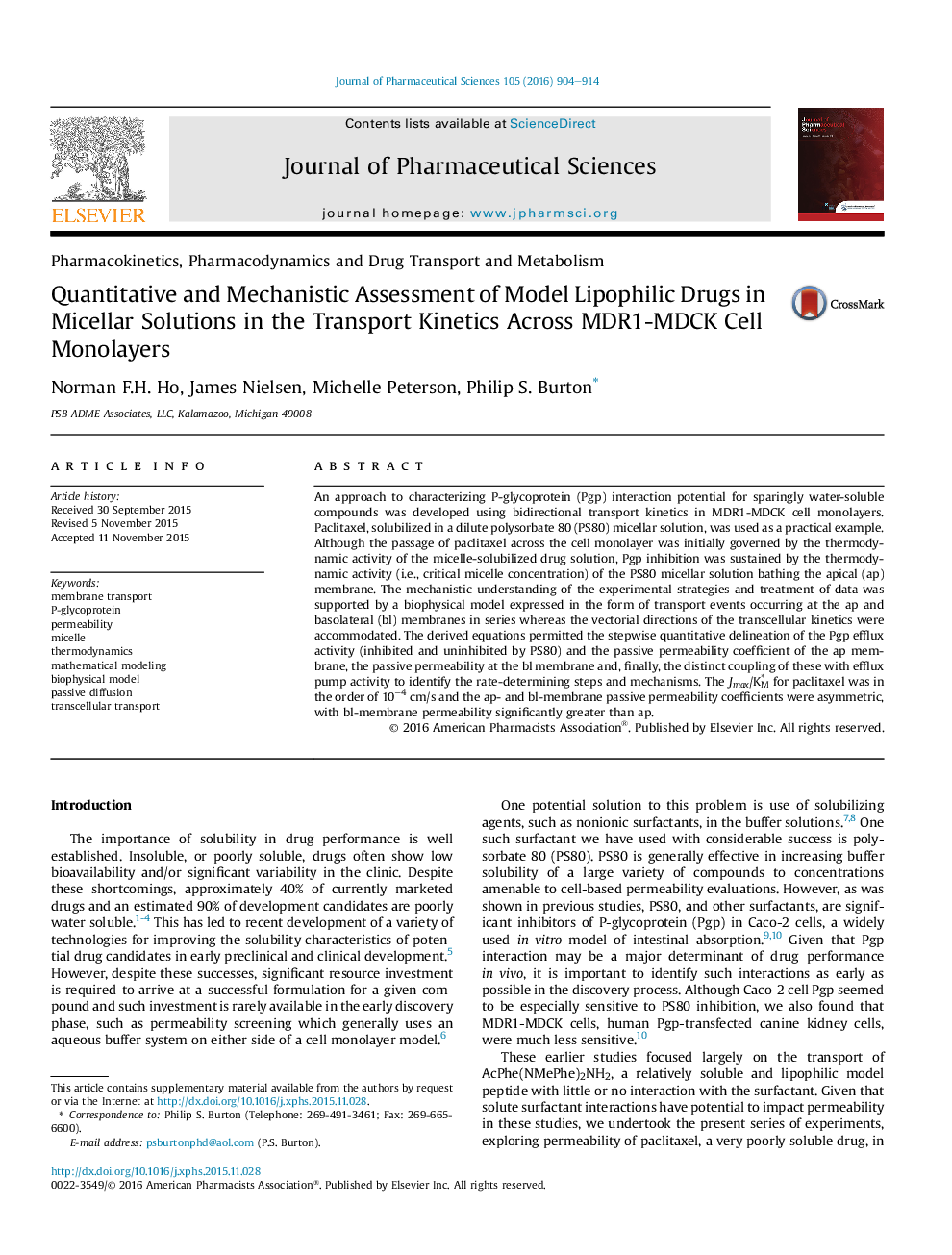| Article ID | Journal | Published Year | Pages | File Type |
|---|---|---|---|---|
| 2484295 | Journal of Pharmaceutical Sciences | 2016 | 11 Pages |
Abstract
An approach to characterizing P-glycoprotein (Pgp) interaction potential for sparingly water-soluble compounds was developed using bidirectional transport kinetics in MDR1-MDCK cell monolayers. Paclitaxel, solubilized in a dilute polysorbate 80 (PS80) micellar solution, was used as a practical example. Although the passage of paclitaxel across the cell monolayer was initially governed by the thermodynamic activity of the micelle-solubilized drug solution, Pgp inhibition was sustained by the thermodynamic activity (i.e., critical micelle concentration) of the PS80 micellar solution bathing the apical (ap) membrane. The mechanistic understanding of the experimental strategies and treatment of data was supported by a biophysical model expressed in the form of transport events occurring at the ap and basolateral (bl) membranes in series whereas the vectorial directions of the transcellular kinetics were accommodated. The derived equations permitted the stepwise quantitative delineation of the Pgp efflux activity (inhibited and uninhibited by PS80) and the passive permeability coefficient of the ap membrane, the passive permeability at the bl membrane and, finally, the distinct coupling of these with efflux pump activity to identify the rate-determining steps and mechanisms. The Jmax/KMâ for paclitaxel was in the order of 10â4 cm/s and the ap- and bl-membrane passive permeability coefficients were asymmetric, with bl-membrane permeability significantly greater than ap.
Keywords
Related Topics
Health Sciences
Pharmacology, Toxicology and Pharmaceutical Science
Drug Discovery
Authors
Norman F.H. Ho, James Nielsen, Michelle Peterson, Philip S. Burton,
